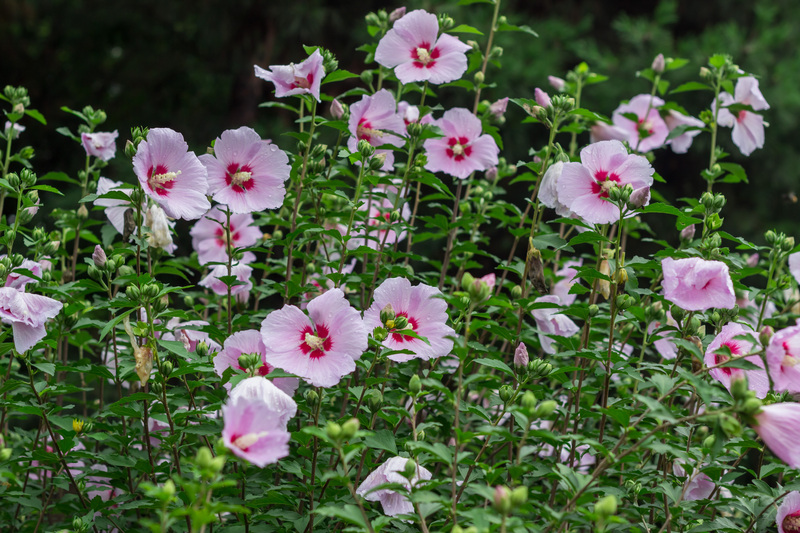Exploring Creative Hedge Trimming Shapes and Techniques
Posted on 05/06/2025
Exploring Creative Hedge Trimming Shapes and Techniques
Hedge trimming is not merely an essential gardening practice for maintaining plant health--it is also an art form. By exploring creative hedge trimming shapes and techniques, landscapers and garden enthusiasts can transform ordinary green walls into mesmerizing focal points. This comprehensive guide delves into inventive methods, distinctive shrub topiary forms, and tips for achieving eye-catching results. Whether you are a passionate home gardener or a professional landscaper, there's endless inspiration to be found in the world of hedge sculpting.

Why Choose Creative Hedge Trimming?
Well-maintained hedges frame gardens, define spaces, and provide privacy. With decorative hedge shaping, you can also express personality, highlight your design style, and build living artwork. Surprisingly, creative hedge trimming offers benefits beyond aesthetics:
- Encourages dense, healthy growth as regular trimming stimulates new shoots
- Supports local wildlife habitats by creating structure and shelter
- Enhances curb appeal and property value with unique topiary
- Allows personalization to make your landscape truly one-of-a-kind
Classic and Creative Hedge Shapes
Before diving into specialist techniques, let's explore some popular and inventive hedge trimming shapes:
1. Geometric Forms
- Cubes and Rectangles: Timeless and formal, perfect for boundaries and paths
- Spheres: These add a contemporary look and are surprisingly easy to master
- Pyramids: The triangular silhouette brings striking structure to a garden
- Cones and Obelisks: Great for punctuating corners or framing entrances
2. Organic and Curved Shapes
- Waves: Undulating curves that mimic the flow of water, ideal for longer hedges
- Cloud Pruning (Niwaki): Inspired by Japanese gardens, creates puffy, floating mounds
- Topiary Animals: From rabbits to peacocks, these require patience but look stunning
- Spirals: An eye-catching shape usually applied to shrubs like boxwood or yew
3. Themed and Artistic Creations
- Lettering and Numbers: Spell out names, dates, or house numbers for a personalized touch
- Architectural Motifs: Echo fences, arches, and classical columns
- Scene Depictions: Create garden stories by crafting boats, castles, or mythical creatures
Many of these creative hedge forms combine basic shapes for extra drama and complexity.
Selecting the Right Plants for Creative Hedge Trimming
The choice of plant species is vital for successful artistic hedge shaping. A few popular choices include:
- Boxwood (Buxus): Small leaves and dense habit, perfect for detailed topiary
- Yew (Taxus baccata): Tolerates heavy pruning and can live for centuries!
- Privet (Ligustrum): Fast-growing and responds well to regular trimming
- Hornbeam (Carpinus betulus) and Beech (Fagus sylvatica): Deciduous options that hold leaves through winter for year-round appeal
- Holly (Ilex): Shiny foliage, slower growth--works in intricate designs
Essential Tools for Creative Hedge Sculpting
To achieve clean lines and intricate details, gather the following tools:
- Hedge Shears: For broad shaping and smoothing
- Secateurs: Precision trimming of small shoots and edges
- Topiary Frames: Metal forms to guide complex animal or abstract designs
- String and Stakes: Helpful for marking geometric shapes
- Long-handled Loppers: For reaching higher sections safely
- Electric or Battery Hedge Trimmers: For large or tough hedges
Innovative Hedge Trimming Techniques
Let's dive into advanced hedge trimming techniques that achieve professional results:
1. Freehand Shaping
- Most suitable for organic, flowing shapes (waves, clouds, spirals)
- Step back regularly to assess overall symmetry and flow
- Work slowly, making incremental adjustments
2. Frame-guided Topiary
- Use wire frames to train hedges into animals, objects, or letters
- Trim foliage flush with the frame for crisp, defined shapes
- Perfect for beginners attempting complex forms
3. Stencil and Cut-out Techniques
- Press large stencils against the hedge and trim around them to outline shapes
- Ideal for incorporating logos, house numbers, or motifs
4. Layered and Tiered Trimming (Niwaki)
- Inspired by Japanese pruning traditions, sculpt plants into layers of 'clouds'
- Space the mounds at different heights for a floating or stepped effect
5. Double-sided and Mixed-foliage Designs
- Plant two species together for variegated or color-contrasted patterns
- Trim alternating stripes, waves, or geometric motifs
Step-by-step: Creating a Spiral Topiary Hedge
Follow these detailed steps to transform a columnar shrub into a classic spiral--an impressive yet approachable decorative hedge shape:
- Select the Right Specimen: Choose a tall, straight shrub like boxwood or yew.
- Mark the Spiral: Use string or ribbon, starting at the top and winding down, to outline the desired spiral path.
- Rough Cut: With shears, trim away foliage along the marked line, forming the spiral's edge.
- Define the Steps: Gradually remove foliage between the spiral bands to accentuate curves.
- Refine the Shape: Even out both the raised spiral and the recessed areas, focusing on symmetry.
- Maintain Regularly: Touch up every few weeks during the growing season to keep edges crisp.
Patience is key for this hedge sculpting technique, but the results are truly stunning.
Practical Tips for Achieving Stunning Hedge Designs
- Trim Little and Often: Regular, light cuts help maintain shape and avoid damage.
- Step Back Frequently: Periodically stand back to evaluate your work from multiple angles.
- Work from the Bottom Up: This technique prevents lower branches from being shaded out.
- Cut in Dry, Calm Weather: Wet or windy conditions can cause uneven cuts and stress the plant.
- Combine Shapes: Mix spheres, cubes, and curves for unique hedge displays.
- Use Chalk or String: Great tools for perfect symmetry in geometric shapes.
Seasonal Considerations for Creative Hedge Trimming
- Spring: The best time for formative pruning, especially for young hedges.
- Mid-Summer: Ideal for clipping established shapes as growth slows down.
- Late Summer/Early Autumn: Final trim before winter ensures a neat appearance.
- Avoid Heavy Pruning in Fall & Winter: Cuts can be vulnerable to frost and disease.
Common Mistakes and How to Avoid Them
Learning creative hedge trimming techniques takes practice. Watch out for these pitfalls:
- Over-pruning: Removing too much at once can stunt growth and leave bare patches.
- Irregular Shapes: Always step back to assess and use guides if unsure.
- Neglecting Tools: Dull or dirty blades can cause ragged cuts and disease spread.
- Poor Plant Choice: Not all species suit advanced topiary--stick to versatile types.
Inspirational Ideas for Creative Hedge Trimming
Looking for more inspiration? Here are some trending and timeless ideas in hedge artistry:
- Maze Gardens: Create walkable labyrinths using tall, tightly clipped hedges.
- Living Walls: Use vertically trained hedges for privacy or garden rooms.
- Garden Sculptures: Craft spirals, domes, animals, or abstract shapes to serve as outdoor art.
- Seasonal Motifs: Trim holiday shapes like stars or bells, or swap designs annually for a fresh look.
- Fantasy Topiary: Put a twist on tradition by making dragons, mythical figures, or even storybook scenes!
Eco-friendly and Sustainable Hedge Trimming
Modern creative hedge trimming does not just prioritize visual appeal. With the right care, your hedge can become a vital part of the local ecosystem:
- Choose Native Plants: They support pollinators and adapt better to local climates.
- Leave Some Areas Wild: Taper dense shaping to allow for nesting birds and beneficial insects.
- Compost Clippings: Recycle waste as mulch to enrich your soil and reduce landfill.
- Avoid Overuse of Power Tools: Manual shears reduce noise, emissions, and risk to wildlife.

Maintaining Your Artistic Hedge Over Time
A creative hedge shape requires ongoing attention. Here's how to keep your masterpiece looking its best:
- Routine Touch-ups: Shape every few weeks in the growing season, and once in late summer.
- Feed and Water: Hedges need regular moisture and annual fertilizer for lush growth.
- Check for Pests: Watch for early signs of disease or insect damage.
- Allow Recovery Time: Don't trim too frequently--give the plant plenty of time to recover and fill out.
Conclusion: Unleash Your Creativity with Hedge Trimming
In conclusion, creative hedge trimming shapes and techniques offer limitless opportunities to make your garden a living work of art. With patience, proper tools, and the right hedge species, you can experiment with everything from classic forms to extraordinary sculptures. By exploring these forward-thinking approaches to decorative hedge maintenance, you'll improve your yard's health, beauty, and character.
So why settle for an ordinary hedge? Embark on your own journey with creative hedge trimming and let your garden's walls become a canvas for expression, imagination, and delight.

